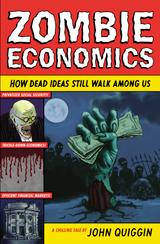Home > Environment > Alternatives to Adani Alternatives to Adani August 9th, 2017 John Quiggin Leave a comment Go to comments It’s obvious to anyone who cares to look that the Adani rail-mine-port project is an environmental and economic disaster area, and that claims that it will generate thousands of jobs and billions of dollars in revenue are nonsense. But that’s little comfort to people in the region, facing high unemployment following the end of the mining boom and the general slowdown in the economy. What’s needed is a positive alternative, and a development strategy that’s adapted to the future rather than the post. Adani’s application for a 0 million concessional loan from the Northern Australia Infrastructure Facility
Topics:
John Quiggin considers the following as important: environment
This could be interesting, too:
Angry Bear writes Associating Microplastics in Mice and Humans
Asad Zaman writes Escaping the jungle: Rethinking land ownership for a sustainable Future
Angry Bear writes Burning stuff is depriving us of years of healthy living
Ken Melvin writes The Big Crunch
Alternatives to Adani
It’s obvious to anyone who cares to look that the Adani rail-mine-port project is an environmental and economic disaster area, and that claims that it will generate thousands of jobs and billions of dollars in revenue are nonsense. But that’s little comfort to people in the region, facing high unemployment following the end of the mining boom and the general slowdown in the economy. What’s needed is a positive alternative, and a development strategy that’s adapted to the future rather than the post. Adani’s application for a $900 million concessional loan from the Northern Australia Infrastructure Facility to finance the rail component of the project raises the obvious question: if this money is available, what more productive ends could it be used for?
Farmers for Climate Action commissioned me to do a report on this, focusing on alternative investments in the agricultural sector. It was release at the weekend, and got some coverage, including in The Guardian. The report is here, along with a summary

